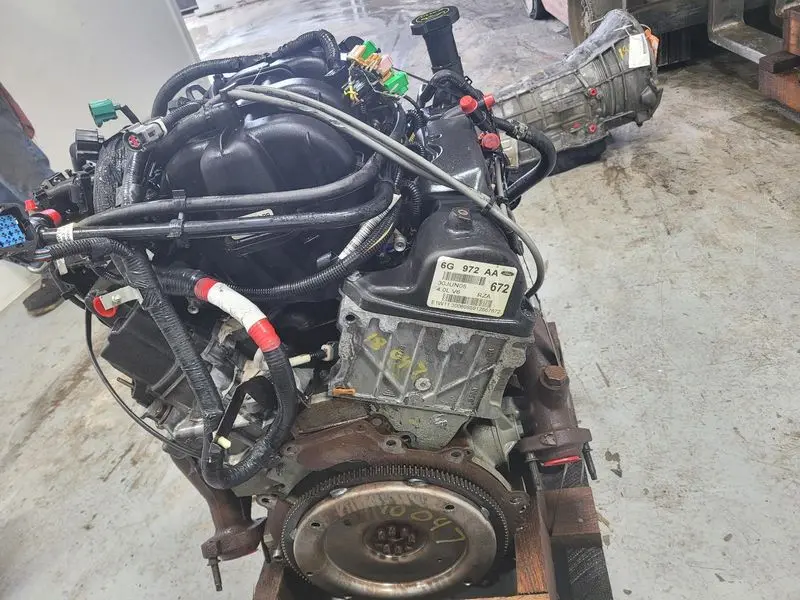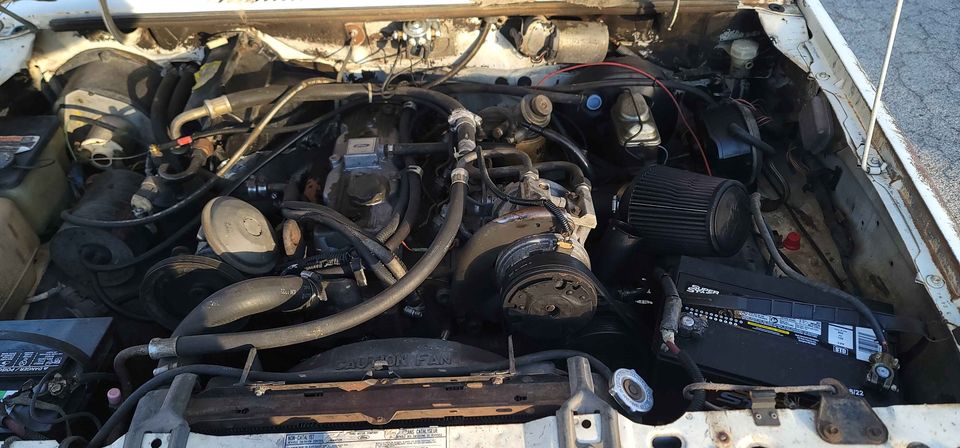How to Maintain and Optimize the 2.2 Ford Ranger Engine for Long-Lasting Performance
How to Maintain and Optimize the 2.2 Ford Ranger Engine for Long-Lasting Performance
Blog Article
Recognizing the Fundamentals of Car Engines: Features, types, and functions

Summary of Cars And Truck Engines
An auto engine works as the heart of a car, transforming gas into power to thrust it forward. This elaborate system consists of various components that work in unison to make certain optimal performance and effectiveness. The basic procedure of a vehicle engine includes the interior burning procedure, in which gas and air are combined, stired up, and expelled to create power.
The engine's style can substantially affect its efficiency, gas effectiveness, and discharges. Secret elements include the cyndrical tube block, pistons, crankshaft, and camshaft, each playing a critical duty in the engine's total feature. The cyndrical tube block houses the cyndrical tubes where combustion occurs, while the pistons transform the eruptive energy from combustion into linear activity. This activity is after that changed into rotational energy by the crankshaft, enabling the vehicle's wheels to transform.
In addition to these components, engines frequently make use of numerous systems such as fuel injection, ignition, and cooling down systems to boost efficiency and durability. Comprehending the basic mechanics of car engines is crucial for detecting problems and carrying out maintenance, eventually adding to the vehicle's integrity and performance gradually.

Kinds Of Auto Engines
Automobile engines can be categorized into a number of types based upon their style, fuel type, and functional principles. 2.2 ford ranger engine. One of the most common classifications consist of inner combustion engines (ICE), electrical engines, and hybrid engines
Interior burning engines, which can be further separated right into fuel and diesel motor, run by igniting a fuel-air mixture to produce power. Gasoline engines are usually lighter and smoother, while diesel motor are a lot more fuel-efficient and deal better torque.
Electric engines make use of electrical power kept in batteries to power an electric motor, supplying immediate torque and no exhausts during procedure. As modern technology advances, electrical lorries (EVs) are significantly coming to be prominent for their environmental benefits and lower running prices.
Crossbreed engines integrate aspects of both interior combustion and electrical engines, enabling flexible source of power and boosted fuel effectiveness. They can operate in various settings, making use of either the fuel engine, the electrical motor, or both concurrently.
Each kind of engine has unique benefits and negative aspects, affecting their application in different automobile types and market segments, from portable vehicles to heavy-duty trucks. Understanding these types is essential for making educated choices concerning car option and performance assumptions.
Engine Features Discussed
Comprehending engine features is important for grasping exactly how cars run efficiently. At the core of any type of inner combustion engine lies the basic procedure of transforming gas right into mechanical energy.
The ignition occurs next, sparking the mixture and creating a fast growth of gases. This pressure drives the piston down throughout the power stroke, which ultimately translates into the rotational motion of the crankshaft. The exhaust stroke after that gets rid of the invested gases from the chamber, giving way for a brand-new cycle to commence.
In addition to these primary functions, engines likewise integrate systems that handle air conditioning and lubrication, ensuring optimal operational temperatures and minimizing rubbing in between relocating parts. This elaborate see here now interaction of features enables the engine to create the power essential for vehicle propulsion while preserving effectiveness and integrity. Understanding these functions offers valuable insight into the intricacies of automotive design and boosts the capacity to identify and deal with engine-related concerns efficiently.
Key Engine Features
Engine layout incorporates a number of essential features that dramatically affect efficiency, efficiency, and sturdiness. One of one of the most vital aspects is the engine setup, which includes inline, V-type, and flat layouts. Each setup impacts the engine's power, size, and equilibrium result, therefore affecting overall car characteristics.
Another crucial feature is the engine variation, referring to the total quantity of all cyndrical tubes. Larger variations generally generate more power however might compromise fuel performance. Engine materials also play a critical function; light-weight and high-strength materials, such as aluminum and magnesium alloys, boost performance without including excessive weight.
The kind of fuel shot system used-- such as straight or multi-port injection-- impacts burning performance and exhausts. Turbocharging and supercharging are features that boost engine performance forcibly extra air into the combustion chamber, enhancing power outcome without dramatically increasing engine dimension.
Lastly, the visibility of innovative engine monitoring systems maximizes fuel-air combination and ignition timing, adding to smoother procedure and far better fuel economic situation. Jointly, these functions define an engine's abilities, setting the structure for its performance and long life in an affordable auto landscape.
Upkeep Tips for Engines
Appropriate engine maintenance is important for guaranteeing ideal performance and longevity, as ignoring routine treatment can lead to considerable problems down the line. To maintain your engine effectively, begin with normal oil modifications, usually every 3,000 to 7,500 miles, depending upon the sort of oil utilized. Fresh oil lubricates engine parts, minimizing friction and wear.
Additionally, monitoring coolant degrees is vital to stop getting too hot. Guarantee that the coolant is topped up and remains in good problem to maintain reliable temperature regulation. Routinely change and examine air and gas filters, as stopped up filters can hinder air movement and fuel shipment, compromising engine performance.
Furthermore, pay focus to stimulate plugs and ignition systems. Used or defective trigger plugs can lead to misfiring and minimized performance. Inspecting the battery terminals and connections for rust is additionally necessary, as a weak battery can affect engine starting.

Final Thought
In summary, a comprehensive understanding of car engines incorporates different types, features, and essential features that dramatically influence vehicle efficiency. Interior combustion engines, together with electrical and check my reference hybrid options, show diverse systems for power conversion. 2.2 ford ranger engine. Recognizing the crucial functions, such as consumption and exhaust cycles, along with vital engine attributes like configuration and gas shot systems, equips cars and truck owners with the Web Site understanding essential for efficient upkeep and operation, inevitably enhancing vehicle longevity and efficiency
A vehicle engine serves as the heart of an automobile, transforming gas into mechanical energy to drive it ahead. The essential operation of an auto engine involves the internal combustion process, wherein fuel and air are mixed, fired up, and gotten rid of to produce power.
Regularly examine and replace air and fuel filters, as blocked filters can hinder air flow and fuel shipment, endangering engine performance. - 2.2 ford ranger engine
In recap, a thorough understanding of automobile engines includes numerous kinds, features, and crucial functions that dramatically affect vehicle efficiency. Identifying the crucial features, such as intake and exhaust cycles, alongside crucial engine features like arrangement and fuel injection systems, outfits auto proprietors with the understanding necessary for reliable maintenance and operation, inevitably improving vehicle long life and effectiveness.
Report this page